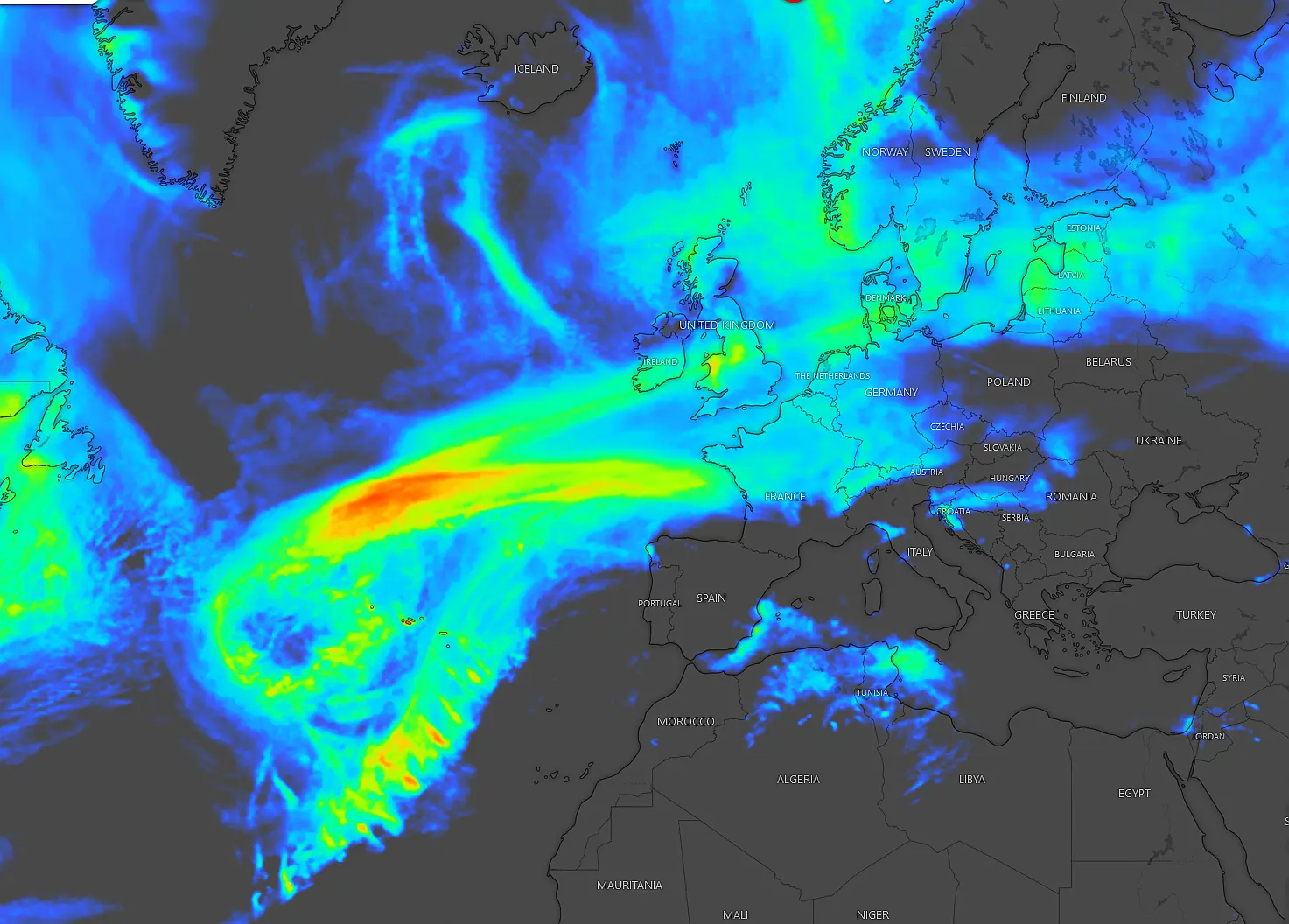The tail of the cyclone will penetrate the center of the continent, bringing wind and precipitation.

The center of the cyclone is located over the northern part of the Atlantic Ocean, west of Great Britain. The cyclone is actively moving to the east-northeast, bringing with it a large area of precipitation.
A well-defined warm front zone is visible, passing through the Atlantic towards Western Europe.
Weather forecast by country
Great Britain and Ireland:
Heavy precipitation is expected, mainly in the form of rain.
Winds will increase, gusting to 15–20 m/s, especially in coastal areas.
Temperatures will remain mild for the winter period due to the influx of warm air from the south.
France and the Benelux countries:
The influence of a warm front will lead to rain, sometimes heavy.
Air temperatures will rise, especially in the south of France, where relatively warm conditions are expected.
Scandinavia:
Rain is expected in the south of Scandinavia (Denmark, southern Sweden and Norway), turning to snow as temperatures drop.
In the central and northern regions, snowfall with increasing winds is possible.
Central and Eastern Europe (Germany, Poland, Belarus):
The precipitation zone will reach these regions later, probably within the next 24 hours.
Precipitation will mainly fall as rain, but as the cold front approaches, it may turn to snow.
Russia (western regions):
The cyclone's influence may become apparent in 1-2 days. Snowfalls and gusty winds are expected in the western regions, including Moscow.
Features of weather conditions
Wind: The cyclone will bring gale-force winds to the coastal areas of the Atlantic and the North Sea.
Precipitation: The greatest amount of precipitation will fall along the warm front and in the area of the cold front.
Temperature: In the front of the cyclone (warm front zone), the temperature will increase, and in the rear part (cold front), a sharp cold snap is expected.
Residents of coastal areas of Great Britain and Ireland are advised to be prepared for stormy conditions.
Drivers in Central and Eastern Europe should take into account the deterioration of visibility and slippery roads due to precipitation.
In Scandinavia and western Russia, it is important to prepare for snowfalls and strong winds.
Such a cyclone is typical for the winter season in the Atlantic and is part of the general air circulation in the temperate latitudes.